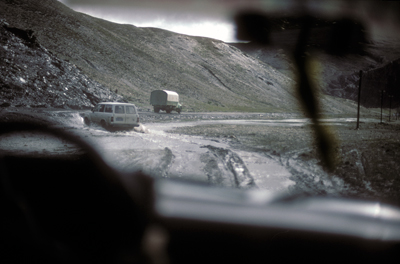 Adventure travel poses all sorts of specialized activity-related problems but provides unique opportunities to capture action shots. Whether you are sailing across an ocean, rock climbing, potholing, mountaineering or bungee jumping it is possible to take a camera with you. However, the level of preparation required increases with the extremity of the activity. Specialized equipment will inevitably be required in some cases.
Adventure travel poses all sorts of specialized activity-related problems but provides unique opportunities to capture action shots. Whether you are sailing across an ocean, rock climbing, potholing, mountaineering or bungee jumping it is possible to take a camera with you. However, the level of preparation required increases with the extremity of the activity. Specialized equipment will inevitably be required in some cases.
A key ingredient in successful images of adventure activities is the demonstration to armchair enthusiasts of what a participant experiences. Capture not only the environment in which the activity takes place but also details of the equipment in use, the type of people who participate, and the actual human experience. Aim to make those who have never taken part say “wow” when they see your images. Get in among the action and get up close. If adrenalin is involved, make sure it can be seen – show the fear and the white knuckles.
Cameras can be used safely in most situations if careful preparation is made. It may be necessary to attach the camera to your head or chest so that both hands are free, and devise a suitable means of releasing the shutter. It may also be necessary to protect the camera from water, dust or debris. This can be done by purchasing or making a suitable waterproof bag or housing with suitable controls. It may also be worth considering remote or automated usage, for instance where the camera is attached to the wing of a hang glider or the top of a yacht's mast.
Unusual angles are always interesting, so if possible position the camera to give a view that would not be normally seen. Looking down onto boats from high above the water, or vertically downwards at climbers ascending a cliff are example of this.






